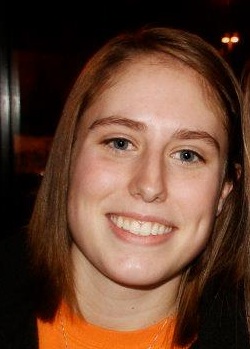Celebration of Scholars
Amygdala Lesions Affect Acquisition of Signaled Lever-press Avoidance in Wistar Kyoto and Sprague Dawley Rats.
 Name:
Kelly Moench
Name:
Kelly Moench
Major: Neuroscience, Psychology
Hometown: Janesville, WI
Faculty Sponsor:
Other Sponsors:
Type of research: SURE
Funding: Neuroscience, Carthage College, Kenosha, Wis; Stress & Motivated Behavior Institute (SMBI), Department of Neurology and Neurosciences, UMDNJ, East Orange, NJ; Neurobehavioral Research Lab, VA New Jersey Health Care System, East Orange, NJ
 Name:
Morgan Gianola
Name:
Morgan Gianola
Major: Neuroscience, Spanish
Hometown: Broomfield, CO
Faculty Sponsor:
Other Sponsors:
Type of research: SURE
Funding: Neuroscience, Carthage College, Kenosha, Wis; Stress & Motivated Behavior Institute (SMBI), Department of Neurology and Neurosciences, UMDNJ, East Orange, NJ; Neurobehavioral Research Lab, VA New Jersey Health Care System, East Orange, NJ
 Name:
Daniel Miller
Name:
Daniel Miller
Department: Natural Science
Type of research: SURE
Funding: Neuroscience, Carthage College, Kenosha, Wis; Stress & Motivated Behavior Institute (SMBI), Department of Neurology and Neurosciences, UMDNJ, East Orange, NJ; Neurobehavioral Research Lab, VA New Jersey Health Care System, East Orange, NJ
 Name:
Zachary Resch
Name:
Zachary Resch
Major: Neuroscience, Great Ideas
Hometown: Sheboygan, WI
Faculty Sponsor:
Other Sponsors:
Type of research: SURE
Funding: Neuroscience, Carthage College, Kenosha, Wis; Stress & Motivated Behavior Institute (SMBI), Department of Neurology and Neurosciences, UMDNJ, East Orange, NJ; Neurobehavioral Research Lab, VA New Jersey Health Care System, East Orange, NJ
Abstract
Servatius et al. (Behav. Brain Res., 2008) demonstrated that inbred Wistar Kyoto (WKY) rats acquired signaled avoidance responding more rapidly and were resistant to extinction compared to Sprague Dawley (SD) rats. To test the role of the amygdala in acquisition of avoidance, we administered electrolytic lesions in the central and basolateral amygdala. WKY rats acquired avoidance faster than SD rats. Amygdala lesioned WKY rats showed a disruption in avoidance responds latency early in training, but by the end of training they were making short latency responses similar to shams. Our findings are similar to previous reports, where it was demonstrated that amygdala lesions delayed acquisition of classical conditioned responding (Lee & Kim, J. Neurosci., 2004). Thus our data suggest that emotional processing via the amygdala during instrumental conditioning is important for acquisition of instrumental conditioning as well as classical conditioning.
Submit date: March 13, 2013, 10:29 a.m.
